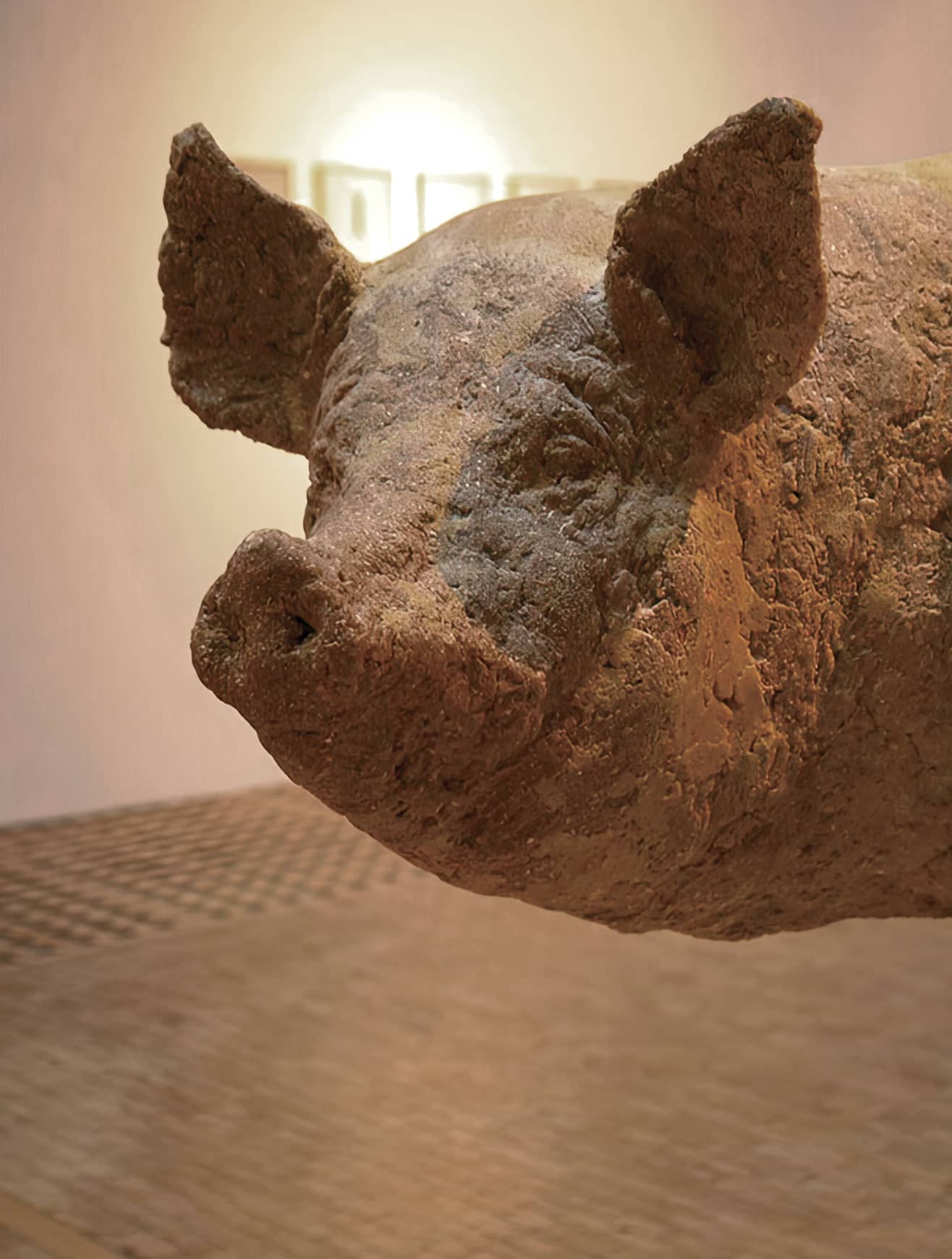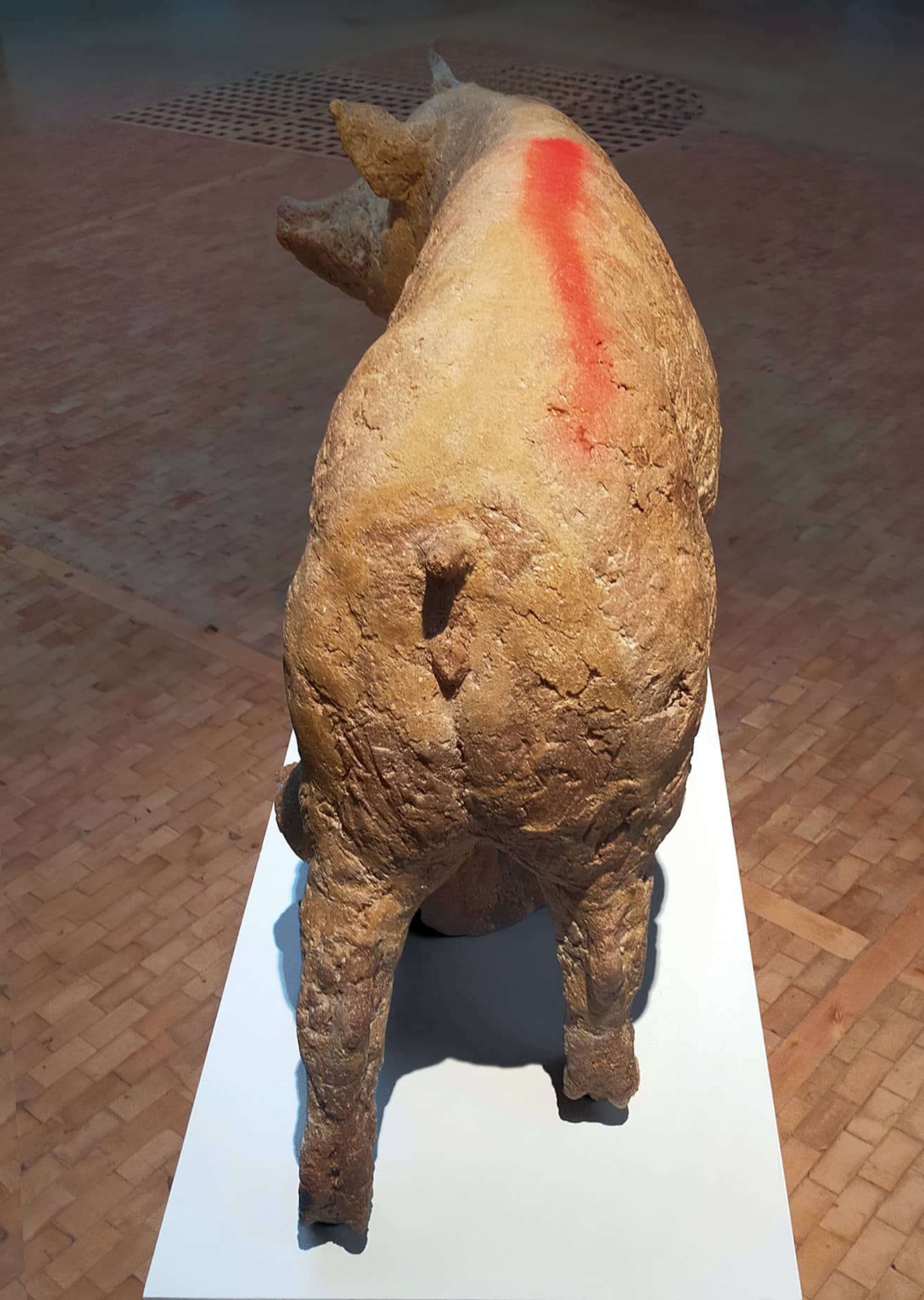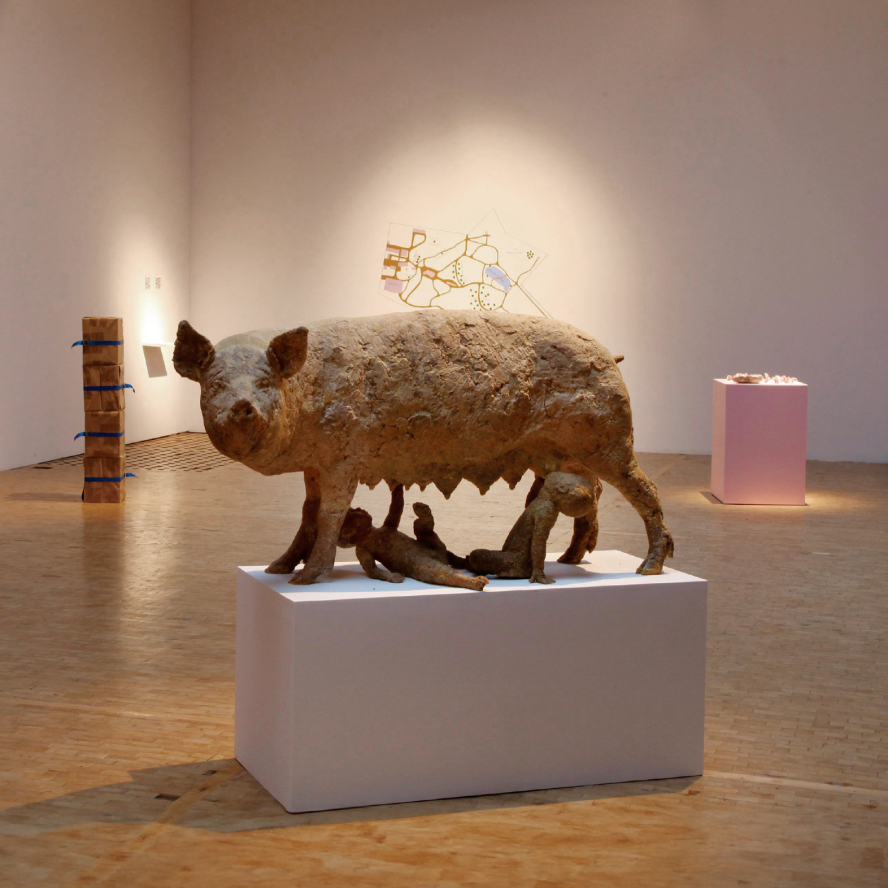Rhea Silvia
(2020)
80 x 150 x 70 cm
Own technique. Corn meal, wood.
Photo: Piotr Szmyt, Jan Gaworski
One of the most famous sculptures in the history of European art depicts a taut, alert Capitoline she-wolf who, according to legend, nourished the founders of Rome. Infants fortified with animal milk were to found the capital of the largest empire of the ancient world. In Ida’s sculptural interpretation, the she-wolf was replaced by a sow, and the main subject of the work became the global empire of consumerism, more powerful than the greatest empires in human history. The empire’s outreach, power and longevity are based on food production plants, giant farms that no longer have much in common with traditional animal husbandry.


The question arises as to what is more brutal, whether how humanity acquires food to cope with its population success, or the fact that we talk about eating other sentient and thinking beings as if we were producing synthetic commodities. Addressing human-animal relationships, Ida has so far surprisingly rarely addressed the topic of eating animals. The only sculpture that directly addresses this phenomenon was made from maize meal; it was edible and impermanent, its final form was decay; placed in the pond of the Polish Sculpture Centre, the sculptural matter became food for the fish there.
In Ida’s sculptures, the matter from which they are made is never accidental. By sewing a fox or a rabbit from sacks intended to transport money, Ida inscribed the animals into the problematic of capital and life regulated by global calculations. The sculpture, referring to the feeding and debt owed to animals, has itself become food returned to nature.
Paweł Brylski


EXHIBITIONS 
So long as we still live
oryginal tittle: “Póki my żyjemy”
Centrum Rzeźby Polskiej w Orońsku / Center of Polish Sculpture in Orońsko, 2020
Curator: Marta Czyż
Photo: Jan Gaworski
Decay
oryginal tittle: “Rozpad”
Center of Polish Sculpture in Orońsko, 2021
Photo: Piotr Szmyt, Gaweł Dykasi


